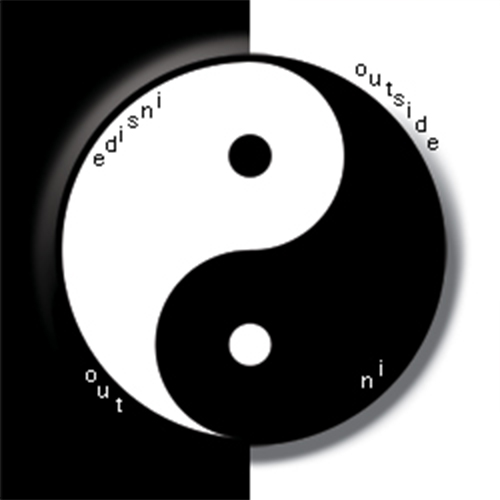Fascial Integration offers complementary skills in postural analysis, physical assessment, problem solving and fascial manipulation, especially for tricky clients not responding to one’s current methodology.
Developed by Bruce Schonfeld after extensive studies in Rolfing Structural Integration and Visceral Manipulation, Fascial Integration (FI) is a natural continuation of Ida Rolf’s method of Structural Integration (SI). Paying forward her whole body approach to physical alignment through holistic fascial manipulation, FI looks through the same architectural lens and applies a ‘local and global’ logic to the next layer deep, the interfacing membranes. Like the biomechanics of other body-based systems that require normal range of motion to fully function, membranes also need to slide and glide and are a critical component of more comprehensive fascial continuity. Whereas Structural Integration segmentally balances the overall musculoskeletal system, Fascial Integration is more widespread in it’s systems anatomy approach. FI expands and evolves Rolf’s relationship with the musculoskeletal system by linking it with the underlying membranes and larger visceral ligaments.
In the era of specialization, Fascial Integration maintains the perspective of a Generalist. Troubleshooting the body segmentally and holistically, the idea is to anatomically see and feel more of the big picture.
A natural companion to Jean-Pierre Barral’s systemic approach to a dominant lesion (The Primary Lesion), FI examines the relationship between the parts and the whole. Providing a broader context of mobility for the Primary Lesion upfront is frequently strategically helpful. Typically with more longstanding issues, where adaptive shortening has insidiously spread across systems over time, regional and global anatomy are both in play and in need of attention. Incorporating elements from both schools of thought, FI offers inter-disciplinary skills and strategies to offset compensatory patterns (The Lesional Chain) throughout the general body. The Primary Lesion and Lesional Chain are two sides of the same unified coin.
One part structural and one part visceral, FI presents a unique Structural-Visceral perspective in the world of fascial manipulation. Finding dynamic balance within a broader fascial web, of compounding internal and external forces, FI takes a volumetric and three dimensional approach to balancing membranous tension.
Supporting professional development and lifelong learning, FI is appropriate for seasoned professionals and beginners alike. FI empowers multi-disciplinary practitioners with user-friendly skills through lecture, video, demonstration, postural analysis, palpatory assessment, hands-on exchanges and supervision. Grounded in physical reality, FI regularly motion tests the body for healthy mobility and range of motion restrictions. FI’s emphasis is tactile, hands-on and with an end goal of practical clinical applications. Strategically, FI assesses the body for the top three motion restrictions across multiple systems.
FI brings a moderate’s approach to the use of force. Valuing direct and indirect styles equally, FI regularly uses Direct Technique in the first phase of fascial manipulation. FI modulates the amount of force being used based on what’s appropriate for each person. To that extent, the client’s subjective experience and proprioceptive feedback are essential ingredients to optimize body-based receptivity. Like styles of yin yoga that relax and settle into postures long enough to let the mechanical load transfer from red to white fibers, FI is patient, respectful, slow and stretchy. With the intention of working with inherent and subtle motion as well, Indirect Technique is applied in the second phase of fascial manipulation. Utilizing elements from both styles in the third phase of fascial manipulation, Combined Technique fills out the therapist’s toolbox within a wider spectrum of tools, techniques and technology.
FI employs a self reflective approach to the mind-body continuum that emphasizes embodiment, mindfulness and the therapeutic container. Helping people identify, sense and feel non-obvious holding patterns in their body is a critical component to fostering more sustainable change. These low-grade holding patterns are often unconscious, functional and seem to operate like a guarding mechanism. Psychologically speaking, the process is associative in nature and prioritizes the feeling function, sensory-perceptual receptivity and being in the moment. On both sides of the client-centered therapeutic relationship, proprioception is paramount.
Metaphorically ‘the anatomical elephant in the room’, membranous and visceral restrictions have lurked in the shadows of orthopedics and physical medicine for a long time. Perhaps currently categorized under idiopathic, non-obvious and non-specific headings in the scientific literature, the bio-mechanical effects of this deeper anatomy still remain largely uncorrelated. While fascial research is a long way away from quantifying underlying mechanisms, it is an emerging arena where evidence-based investigation is in a healthy growth phase. Within a culture of medical specialization that is generically hands-off, A.T. Still’s premise remains largely marginalized, underestimated or neglected.
Towards contributing to the evolving field of Integrative Medicine, Fascial Integration offers Doctors from diverse disciplines practical and clinically oriented applications from Complementary Alternative Medicine (CAM). Dovetailing the Doctor’s physical examination, complementary skills in physical assessment investigates the relationship between local and global bio-mechanics and adaptation. FI explores non-obvious territory and mechanisms. FI is complementary to orthopedics and represents a ventral approach to the spine. In accord with a Doctor’s discretion, and trying less invasive options before more invasive ones, the Integrative edge offers patients the best from both worlds.
As Abraham Verghese MD says in his TED Talk A doctor’s touch, “When we shortcut the physical exam… we are losing much more than that… we’re losing a ritual that I believe is transformative, transcendent and is at the heart of the patient / physician relationship. I’d like to introduce to you the most important innovation, I think, in medicine to come in the next 10 years and that is the power of the human hand…”.


